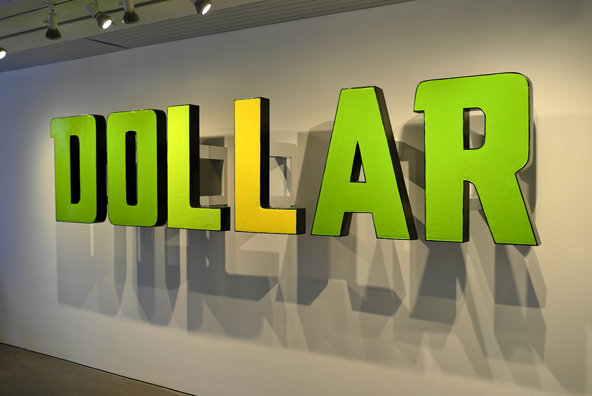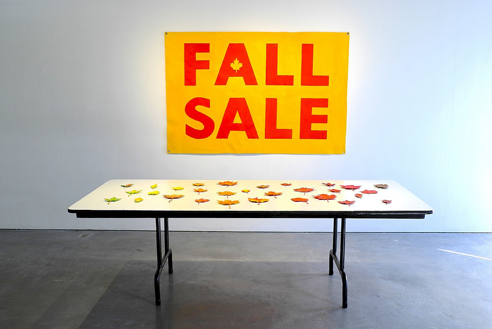Leah Oates: How did you become an artist and did you know early on that you would be in the arts or did you begin as something else? Where there other artists in your family?
Conrad Bakker: As a child I was always curious about the world and interested in making useless things, but becoming an artist was never really presented as a viable option. My parents immigrated from the Netherlands to Canada when they were younger, and I was born in Canada and then moved with my family to the gulf coast of Florida when I was six— there was very little exposure to art in this subculture dominated by retirement and vacation. There were no artists in my immediate family, but even as my creative impulses were not completely understood outside of a protestant-like appreciation for hard work and self-reliance, I was never really discouraged from pursuing art. During college I wandered through a number of temporary jobs that included working in an aluminum foundry, a neon sign company, and a commercial frame shop—and then switched majors during my last year from graphic design to painting because the commercial field felt limited. I think I ended up choosing the vocation of a studio artist because it allowed me to do what I wanted to do with access to the widest range of creative and critical inquiry.
LO: What is your working process? Do you plan things out or play in the studio?
Each artist is so different in how they approach their work. How do you approach the creation of your work?
CB: My studio process is a mix of intensive research and formal play. Sometimes a project starts with a set of specific conditions related to a site, a moment of time, or a cultural phenomenon. At other times a project begins with an impulsive response to a certain form or color. Because I make simulated objects, sculptures of carved wood and paint, that look and act like real things, many of my projects are based on direct observations of everyday things and their habits, their relational networks, and their economies.
My studio practice occupies a number of pragmatically determined spaces that have distinct and sometimes overlapping durations: a camera/notebook for collecting/drawing as site-specific research, a computer and desk space for thinking and planning, a wood shop space for construction and sawdust, a painting space for finishing, and then the site of installation or intervention for display and public reception.
LO: Your work deals with consumerism and desire and you create objects out of wood to replicate actual consumer goods like detergent, watches or books and then place them in the shelved of stores next to the actual object. What kind of reactions do people have when they select one of your works off the shelves and what type of reaction would you like them to have?
CB: A number of my projects involve the placement of carved and painted sculptures in vernacular settings that range from store shelves and public plazas to city sidewalks and ebay auctions. This strategy is purposely designed to extend the double-take of the formal illusion into the larger context so that the carved and painted sculptures look and momentarily act like their originals. One of the goals of this work is to create objects that are strange, fake things that reveal alienation, that sustain tension, and provide momentary pause to the quickness of consumption. So as these sculptures are forced into and move awkwardly through a specific site or economic system, they bump and dent a trail that begins to make tangible their underlying forms, uses, and trajectories.

Conrad Bakker, Untitled Project, Dollar Store
LO: Why do you think art is important for the world and why is it important for you as an individual artist?
CB: I think art is as important as anything else. All too often art gets overrated in regards to its cultural significance and/or economic value, but art can happen in a lot of places without special recognition or privileged status. If I were to declare what makes art important for me, it would center on the idea that art makes room for both creative pleasure and critical analysis, it allows for the strange and the beautiful, it permits the anomaly, it questions the normative, it resists expectations, it represents our best moments and our worst fears, it can even provide an escape from reality and sometimes, if we are lucky, a return.
LO: What advice would you give other artists who are emerging or mid-career?
CB: Advice is so contextual, so this obviously will suffer in its generalization: find a place where your work and the world you inhabit are not at odds with each other and then do whatever possible to make that sustainable.
LO: Please talk about upcoming bodies of work, shows etc that you have coming up.
CB: I have a new project underway called Untitled Project: ANY THING YOU WANT which is something like a small scale commission service for which I am offering to make custom carved and painted sculptures of any thing one might want, including but not limited to: lost items, desired commodities, functional tools, surrogate stand-ins, estranged artifacts, vintage souvenirs, hard evidence, or ambiguous matters of concern. The idea for this project came out of a series of conversations with viewers and participants of projects who would often make casual suggestions of specific things I should make next. These suggestions invariably had more to do with their interests than mine, but they also opened up a natural space for talking about things and our connections to them. I guess this project is also an awkward attempt to open up my studio practice to taking requests just to see what happens. Maybe I will discover a niche market of fake things for real spaces, or perhaps this project really only exists in the conceptual space of that open question: what thing would one choose to have simulated and why?
I have a few other large scale projects and exhibitions in various stages of development, including a series of objects and images that are inspired by Robert Smithson’s essay The Crystal Land and William Carlos Williams epic poem Paterson. Another upcoming project is focused on the 1964 Honda Superhawk CB77, a rather specific vintage motorcycle.

























